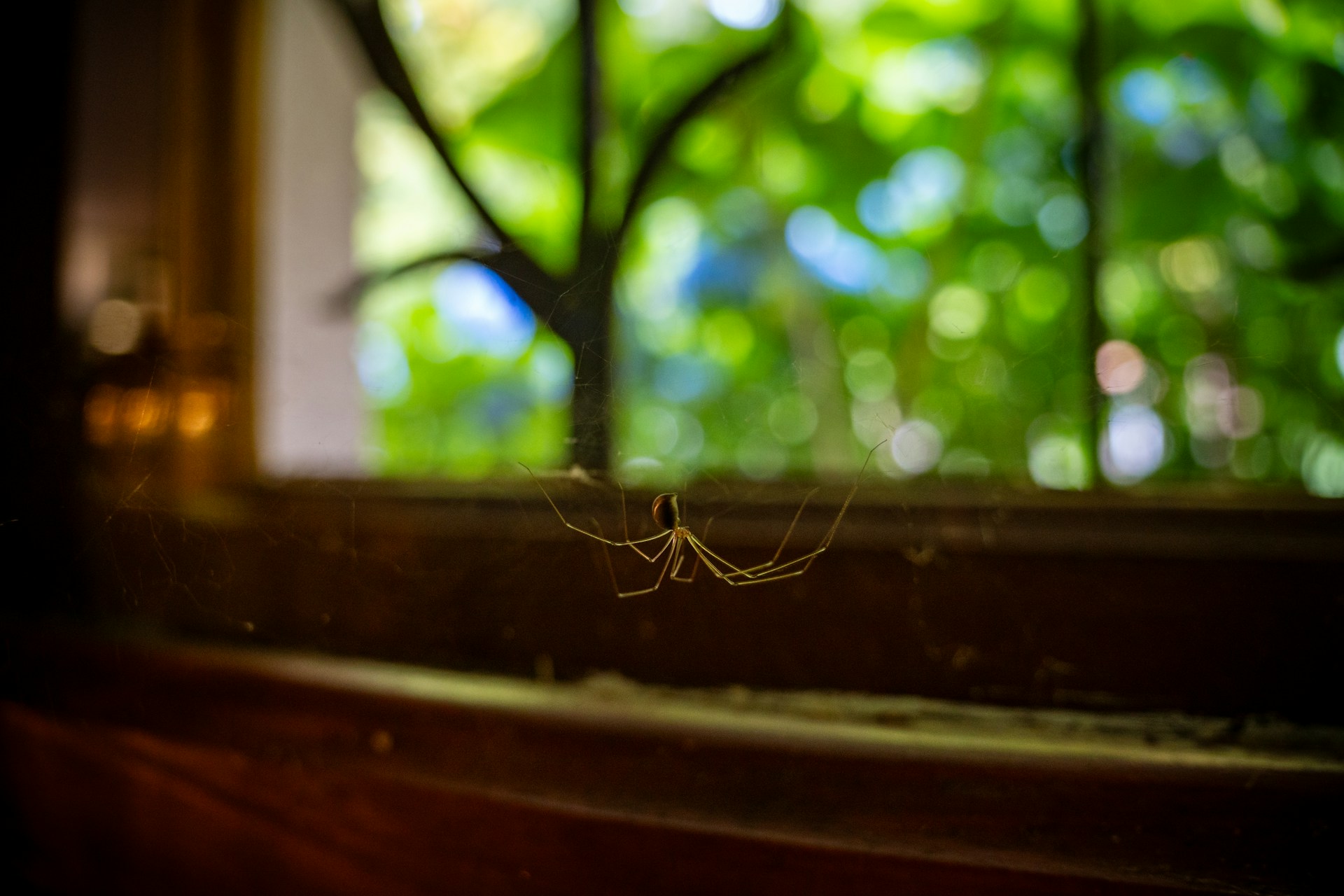
Window Treatment & Styles
Poisonous Spiders in Ontario and How to Identify Them
Although Ontario is home to hundreds of spider species, most are harmless and even good to have around, as they can help control pest populations. However, there are a few poisonous spiders in Ontario, including the northern black widow, the yellow sac spider, and the brown recluse spider (the latter only if brought by accident from elsewhere).
This guide will help you identify the most venomous spiders found (or occasionally spotted) in Ontario and understand the toxicity of their venom and the symptoms of their bites. We'll also share some tips on how to protect your home from infestation!
Key Takeaways
- Venomous spiders are rare but present in Ontario. The northern black widow and yellow sac spiders are the main species of concern. Brown recluse spiders do not naturally occur in Ontario but may be accidentally introduced.
- Venomous spider bites are uncommon and usually not life-threatening if treated promptly. Black widow and brown recluse spider bites are more serious and require immediate medical attention. Yellow sac spider bites are typically mild and self-limiting.
- Most spiders enter homes through small cracks, poorly sealed windows, or torn bug screens. They may follow prey insects indoors or seek shelter in quiet, cluttered spaces.
- You can significantly reduce the risk of seeing spiders indoors by installing well-fitted bug screens, sealing structural gaps, and keeping your home and yard clutter-free.
Venomous Spiders in Ontario
Here are the venomous spiders found or spotted in Ontario:
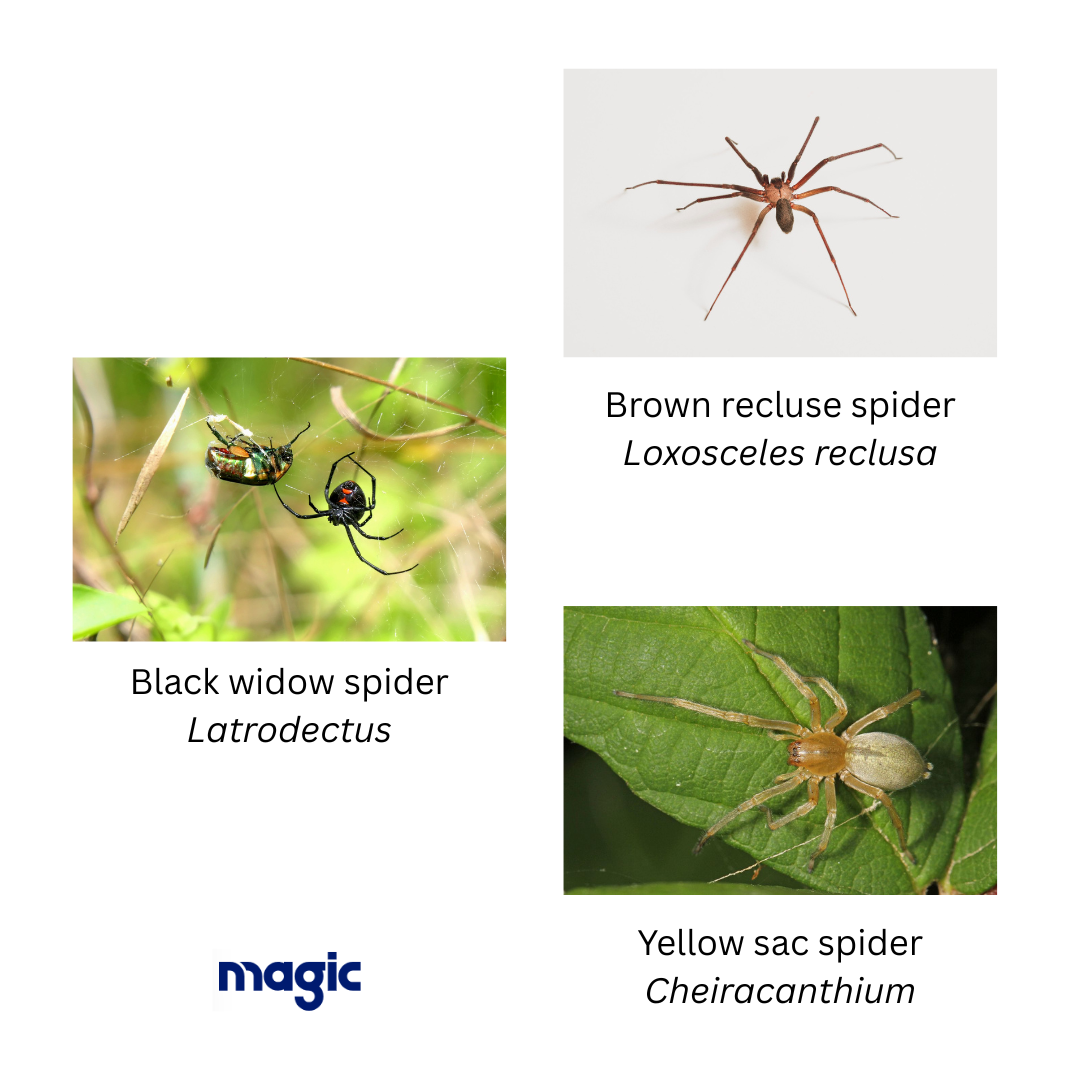
In the following sections, we'll discuss each species in detail.
Black Widow Spider
The black widow spider is part of the Latrodectus genus. It is one of the most venomous spiders in the world.
In Ontario and Southern Canada, you may stumble upon northern black widow spiders (Latrodectus variolus). However, they are incredibly rare in this region. Western black widow spiders (Latrodectus hesperus) are much more abundant than their northern relatives in Canada, but they are only found from British Columbia to Manitoba.
Nevertheless, even though you're unlikely to encounter a black widow spider in Ontario, it's recommended to learn about their behavior and bites.
Description
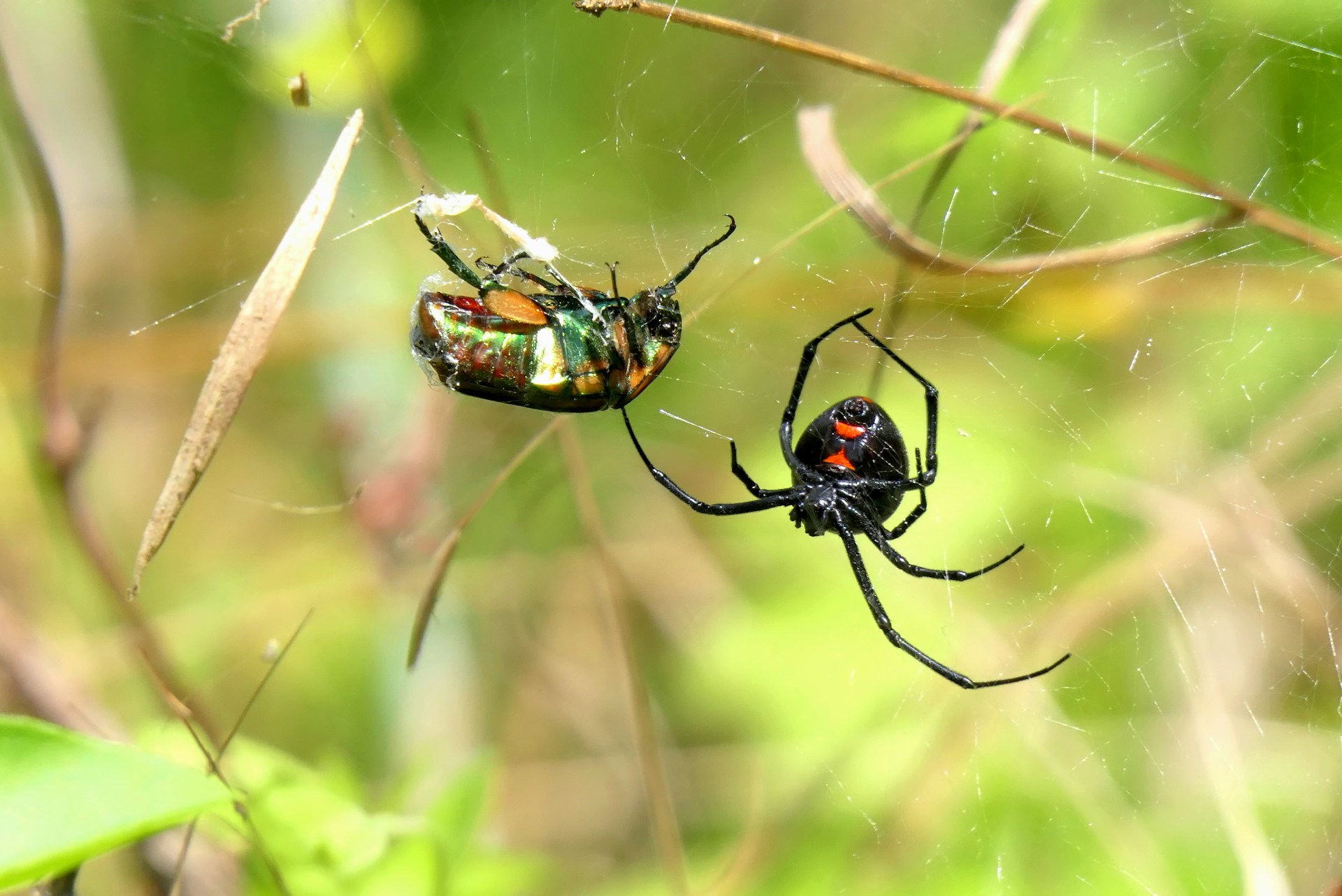
The black widow spider has a shiny black body. It also has a noticeable red hourglass marking on the underside of its abdomen. Some individuals also have white stripes. The spider's name is inspired by the behavior of the female spider: it sometimes eats the male after reproduction.
These arachnids prefer dark, secluded environments such as garages, woodpiles, and basements, where they build their webs in stumps, logs, and under stones. Their silk is strongly adhesive and feels like rubber at the touch.
Bites and Venom
While they are generally docile, black widow spiders can attack humans if provoked. Their bites cause a sharp pain, followed by a dull numbness.
Their venom is delivered through the spiders' fangs, which is why you may see tiny fang marks accompanied by redness and swelling. For humans, it acts like a neurotoxin and can cause latrodectism. The toxins in the venom affect the nerves, triggering the massive release of various neurotransmitters like acetylcholine, norepinephrine, and GABA. This causes symptoms like:
- Pain
- Muscle cramps
- Sweating
- Fast pulse
- Constant muscle pain
- Fever
- Nausea
- Vomiting
The venom of the black widow spider is incredibly potent, estimated to be 15 times more poisonous than that of a rattlesnake. However, despite its strength, bites are rarely fatal, and symptoms vary depending on the amount of venom injected, as well as the victim's sensibility.
Yellow Sac Spider
The yellow sac spider is another venomous spider found in Ontario, although it is certainly not as venomous as the black widow spider.
The yellow sac spider species found in Ontario is scientifically called Cheiracanthium mildei. It is also known as the northern yellow sac spider or the long-legged sac spider.
Description
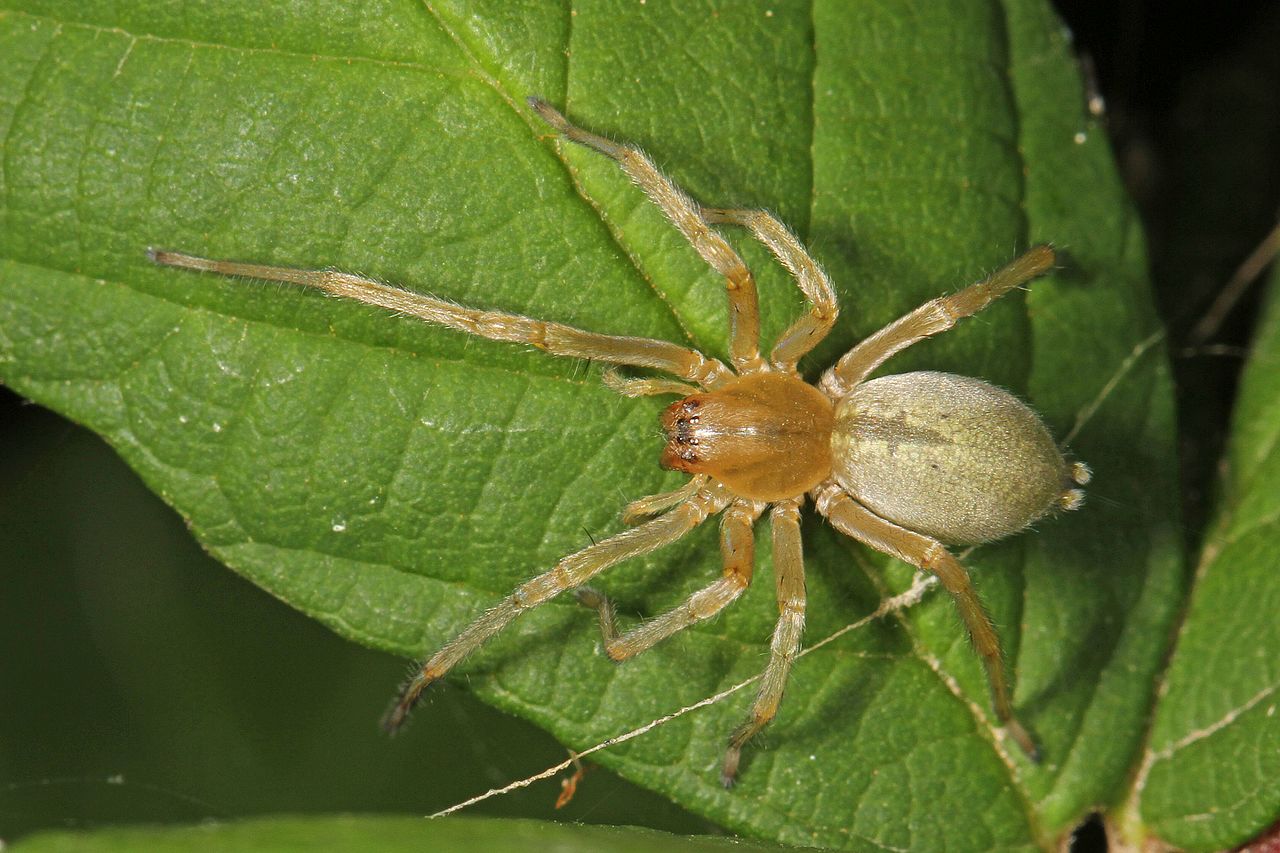
The yellow sac spider has a pale yellow or greenish body, appearing somewhat translucid, and measures 7-10 mm (0.27-0.39 in) in body size.
These spiders are predators of other arthropods, preying primarily on certain spiders, fruit flies, and leafhoppers. They primarily hunt at night and, therefore, do not capture prey in a spiderweb.
Bites and Venom
Yellow sac spiders often enter homes. They can be spotted on ceilings, corners of walls, and under window sills. They may create small cocoons used as hiding spots during the daytime.
These spiders will usually just mind their own business, even around humans. However, if cornered or threatened, yellow sac spiders can definitely bite.
Yellow sac spiders are only mildly venomous. Their bites can cause:
- Pain
- Swelling
- Skin lesions
- Redness
Their venom has been deemed necrotic, but a study has shown that of 39 reported bites only one caused mild necrosis. This means that the likelihood of yellow sac spider bites causing necrosis is very low.
Brown Recluse Spiders
Brown recluse spiders do not live in Ontario but are sometimes spotted here. The climate in Ontario does not suit their habitat requirements, which is why there is no brown recluse spider population here. However, it is believed that some individuals travel accidentally to Ontario from the Central or Southern USA.
Although it's highly unlikely to encounter a brown recluse spider, it's important to stay informed to minimize any risks.
Description
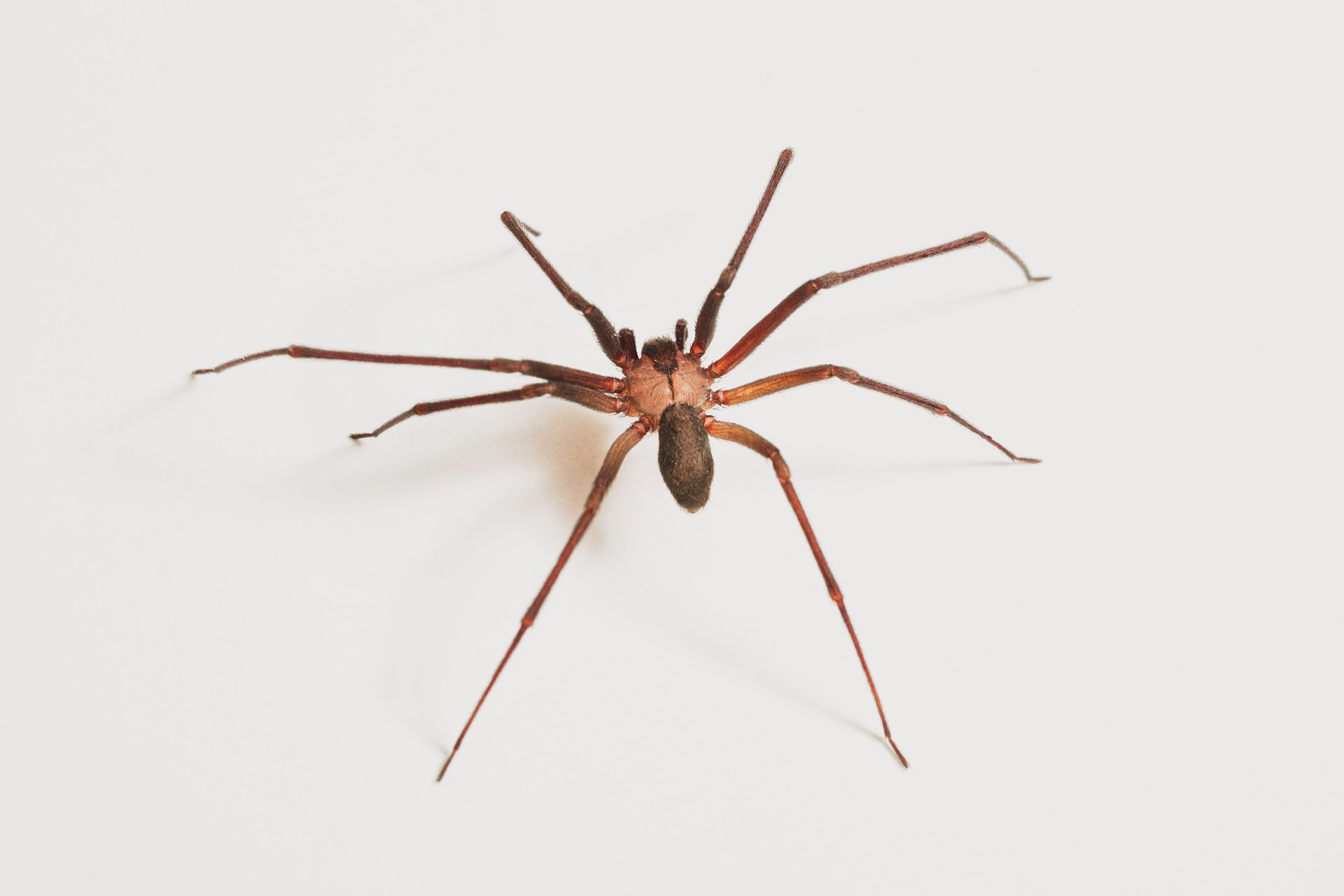
Brown recluse spiders measure between 6 and 20 mm (0.23-0.78 in) long. They are typically light to medium brown, although some individuals may be whitish or dark brown.
These spiders have a unique violin-shaped marking. You can also identify them by the arrangement and number of the spiders' eyes: brown recluse spiders have only six eyes (while most spiders have eight).
Behavior and Venom
Brown recluse spiders usually try to get away if cornered or threatened. They may even play dead or rely on autotomy (self-amputation, much like lizards) to avoid conflicts. Because of this, brown recluse spider bites are extremely rare. Plus, their fangs are not large enough to penetrate fabrics.
Brown recluse spiders usually bite humans only when pressed against the skin. For example, if the spider has been hiding in your jeans and you put them on, the spider may bite you.
The brown recluse spider venom is toxic, but most venomous bites usually cause minor symptoms. In most cases, the bite causes pain and itchiness within 2-8 hours, which can worsen 12-36 hours after the bite. In rare cases, the bite can cause loxoscelism, which is a condition that causes the skin around the bite to die. Loxoscelism can also cause:
- Nausea
- Vomiting
- Fever
What Should You Do If You’re Bitten by a Venomous Spider?
If you suspect that a venomous spider bit you, here's what you should do:
- Wash the bite area with soap and water.
- Apply ice to reduce pain and delay the venom's effects. Avoid applying ice directly to your skin.
- Keep the bite site elevated.
- Don't suck out the venom. It's dangerous.
- Seek immediate medical attention if you suspect that a brown recluse spider or a black widow spider bit you. If left untreated, the symptoms can worsen.
- If possible, bring the spider with you, so the doctors can confirm it is a black widow spider or a brown recluse spider.
If you were bitten by a yellow sac spider, there's no need to seek medical care unless it causes an allergic reaction. Instead, you can take an anti-inflammatory pain medicine. If the symptoms don't go away, you can seek medical attention.
How to Prevent Venomous Spider Bites
Although dangerous spiders are rare in Ontario, it’s wise to take simple precautions to avoid bites:
- Wear long sleeves, pants, and gloves when working outdoors, especially around firewood, rocks, or stored items.
- Shake out clothes and shoes before wearing them, especially if they’ve been sitting unused.
- Store firewood at least 20 feet from your home, raised off the ground.
If you spot a black widow or brown recluse outdoors, don’t panic—these spiders won't attack you unless provoked. Avoid contact and keep pets and kids away. For indoor sightings, safely trap and release the spider outside using a jar and stiff paper, and inspect the area for webs or egg sacs.
If you come across a yellow sac spider, stay calm—they’re only mildly venomous. You can usually relocate them outdoors without concern unless there’s an infestation.
Preventing Spider Infestations in Ontario Homes
Although it's unlikely (but not impossible!) to have venomous spiders entering your Ontario home, it's essential to make sure your home does not look appealing to them. Plus, there are a myriad of other spider species that can take residence in your house. The preventative measures we'll discuss below work for various kinds of spiders - whether venomous or non-venomous.
1. Seal Cracks and Gaps in the Structure
Spiders don't need a big opening to get inside. A crack the width of a pencil is more than enough.
What to do:
- Inspect your home's foundation, walls, baseboards, and exterior siding for cracks, and use silicone caulk, expandable foam, steel wool, or copper mesh to fill them.
- Don't forget areas behind appliances and under sinks where pipes enter walls.
2. Install and Maintain Bug Screens
Bug screens are a primary barrier between your home and all kinds of pests, including spiders and the insects they feed on.
What to do:
- Install tight-fitting mesh screens and repair any holes right away to block spider entry.
- Check for gaps between the screen frame and the window—even small openings can allow spiders to squeeze through.
- Use fine mesh (20 mesh or finer) to prevent even small spiderlings from entering.
If you're looking for a highly effective bug screen, you can contact Magic to learn more about our innovative technologies. Many Ontario homeowners have found that our screens offer a durable and functional solution for keeping bugs out!
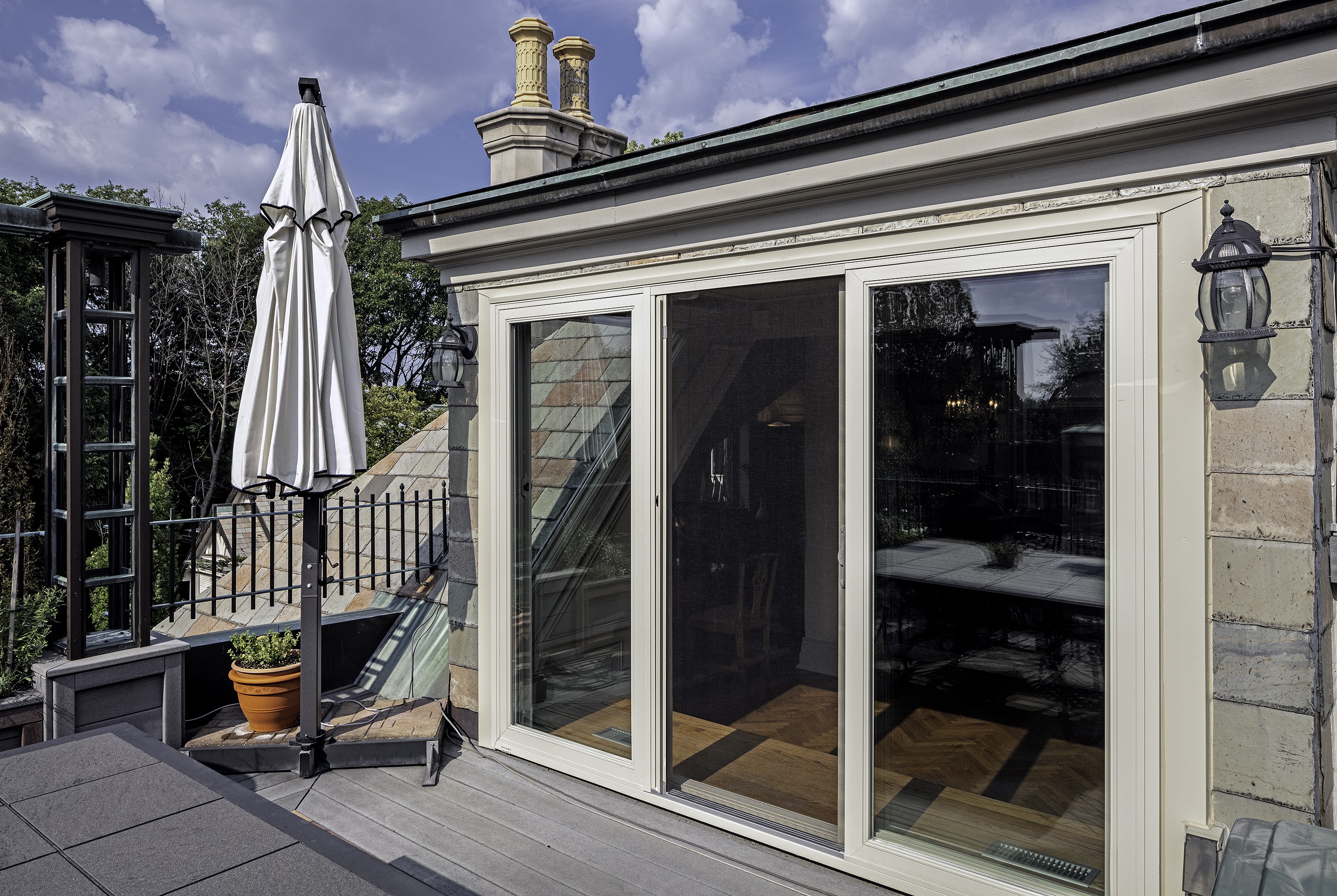
3. Keep Clutter and Debris Away from the House
Outdoor clutter, such as stacked firewood, dense shrubs, and leftover yard waste, creates the perfect shelter for spiders. If these hiding spots are close to your house, the chances of spiders wandering or nesting inside dramatically increase.
What to do:
- Move firewood, rocks, and compost at least 20 feet away from the house.
- Trim shrubs and grass so they don’t touch the foundation or exterior walls.
- Keep storage bins, outdoor toys, or trash cans tightly sealed and off the ground.
4. Clean and Declutter Indoors Regularly
Indoors, clutter gives spiders places to hide, nest, and hunt in peace, especially in dark corners, under furniture, or in storage boxes.
What to do:
- Vacuum and dust regularly, especially behind furniture, under beds, and in closets.
- Avoid stacking cardboard boxes. Use sealed plastic bins instead.
- Shake out shoes, towels, or bedding that’s been unused for a while (especially in basements or attics).
5. Ensure Properly Sealed Windows and Doors
Doors and windows that don't close tightly or have warped or cracked frames leave gaps that spiders can easily slip through. Windows that are near ground level or where lights are on at night are particularly vulnerable.
What to do:
- Add or replace weatherstripping around doors and windows and install door sweeps.
- Make sure the window sashes close fully and tightly.
- Use foam insulation tape on window frames if there's a slight draft or gap.
- Check for light showing around doors at night; this usually means spiders can enter too.
If your windows or glass doors are old and need to be replaced, you can get Magic units, which are engineered directly here in Ontario. This translates into superior quality control and high customizability!
6. Reduce Attractants Like Other Insects
Spiders don't come indoors to spend some quality time with humans. They often follow their food. If your home has a fly problem, for example, spiders will follow.
What to do:
- Keep lights off or use yellow bug lights outdoors to reduce flying insects near doors/windows.
- Fix leaks and reduce moisture, as it attracts insects that spiders feed on.
- Use pest control measures or traps to reduce insect populations inside.
7. Use Physical and Chemical Barriers as Needed
Even after sealing and screening, some spiders may still find their way in. Because of this, you can use traps and perimeter sprays for some additional defense layers, especially in high-risk areas or older homes.
Ensure to follow all label instructions and safety precautions. If you don't know how to use these products, it's best to seek professional help.
Other Common Spiders in Ontario
Ontario hosts a wide variety of spider species, with over 800 identified across 35 families. Most are harmless and even beneficial. Here are some of the most common Ontario spiders:
- Common house spiders: often build messy webs in basements, corners, and garages; harmless but persistent if not removed.
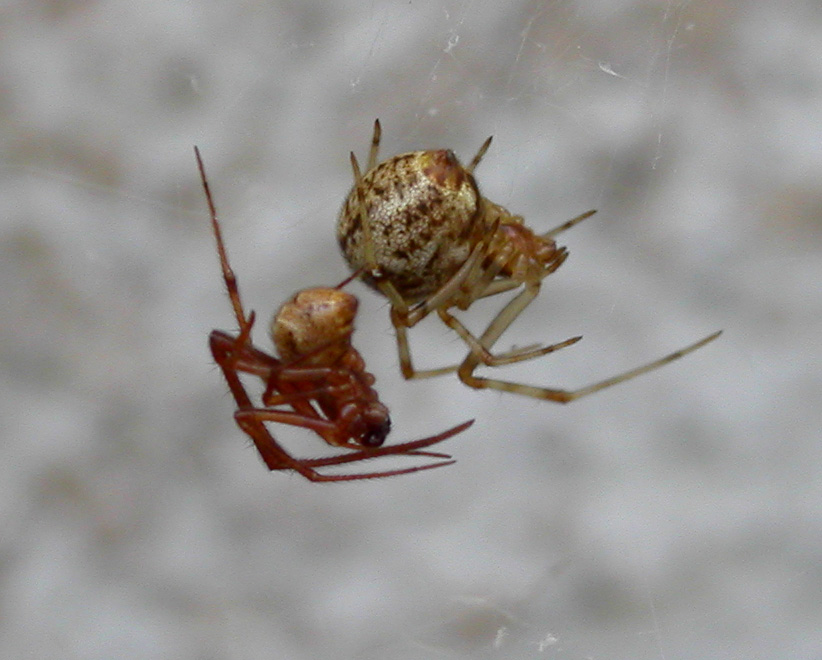
- Cellar spiders: frequently found in basements and crawl spaces; harmless and may help control other insect pests.
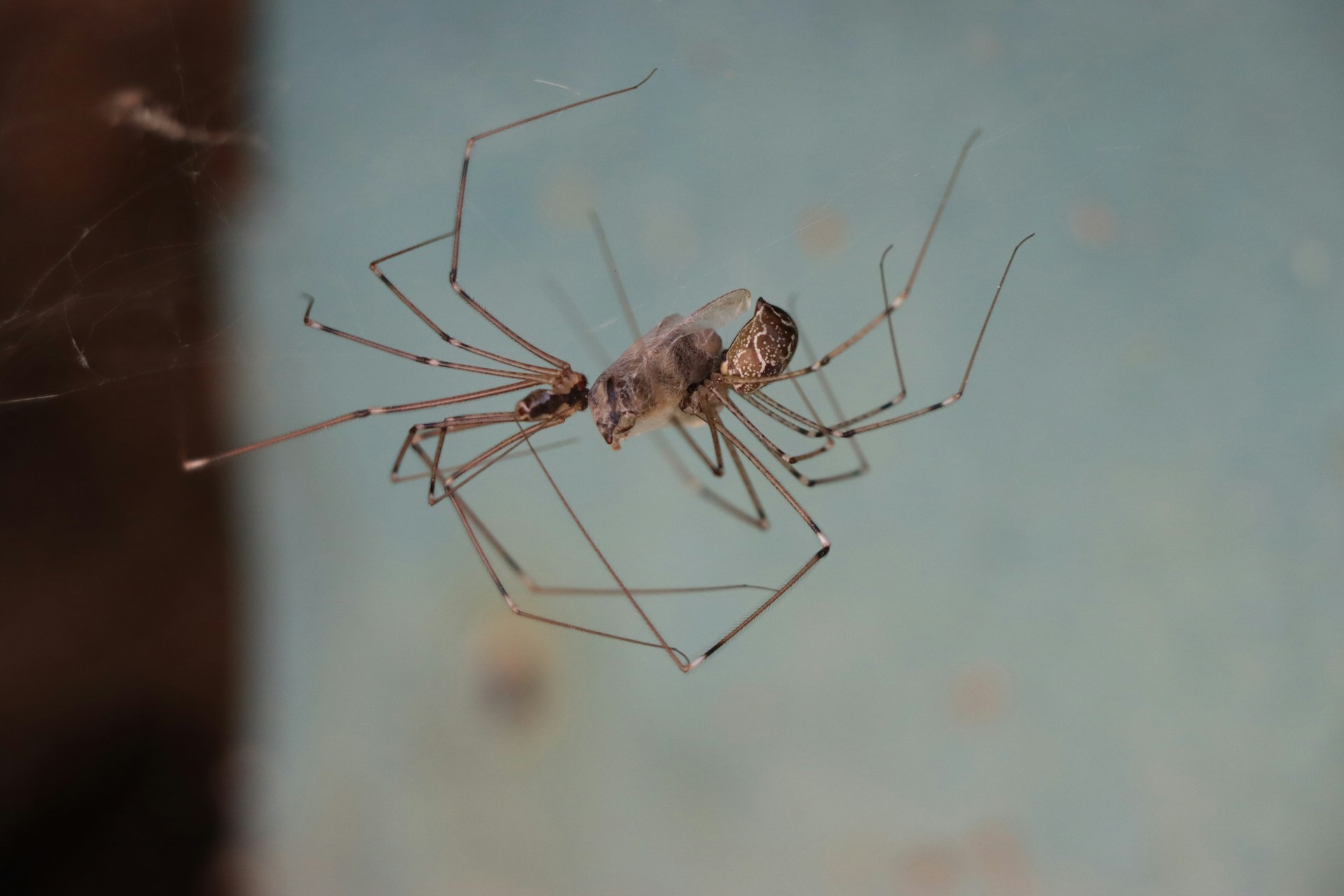
- Yellow garden spider: large and striking but not dangerous; found in gardens in tall grass; good for pest control outdoors.
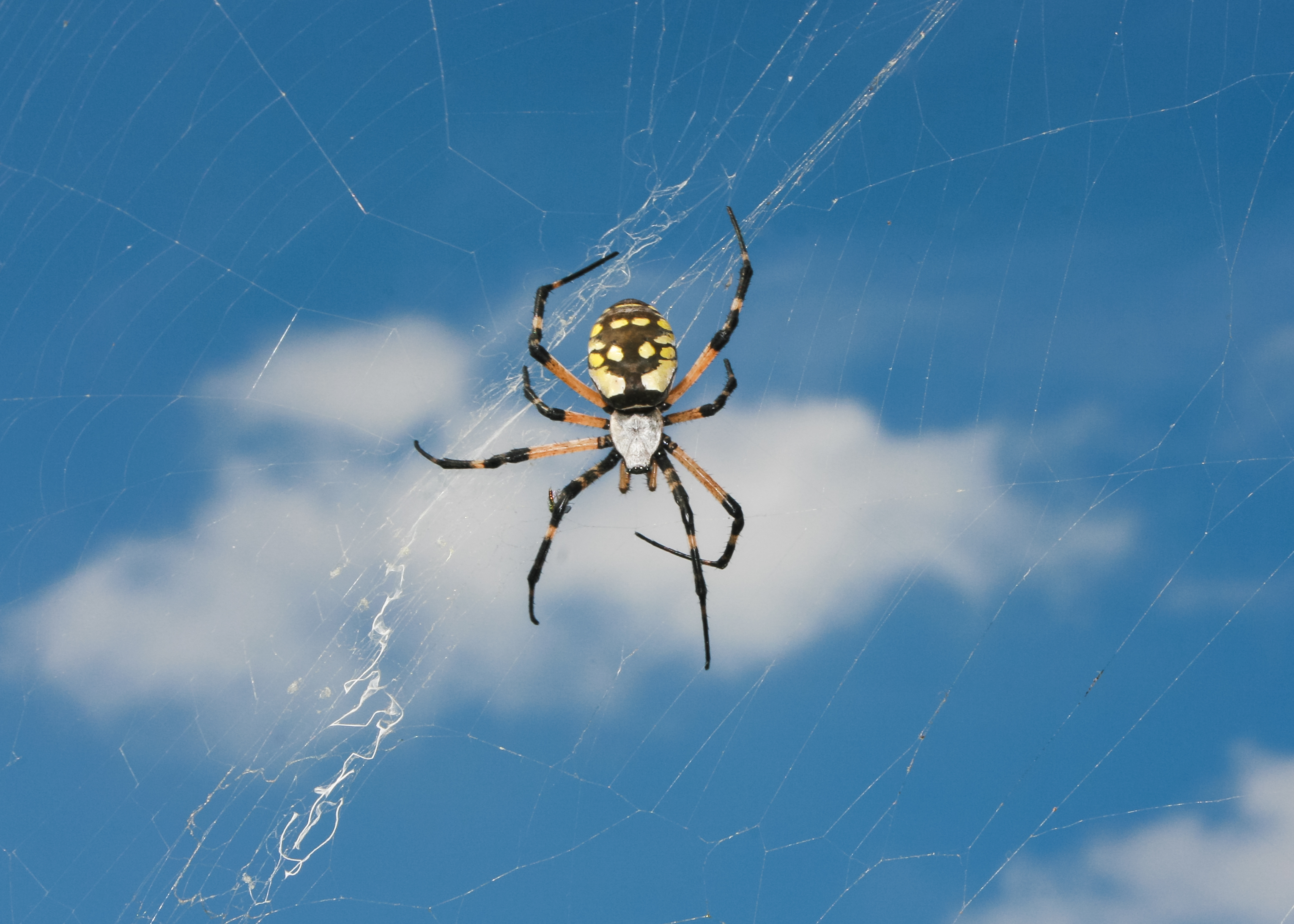
- Wolf spiders: large and fast-moving but non-venomous; may enter basements or garages while hunting insect prey.
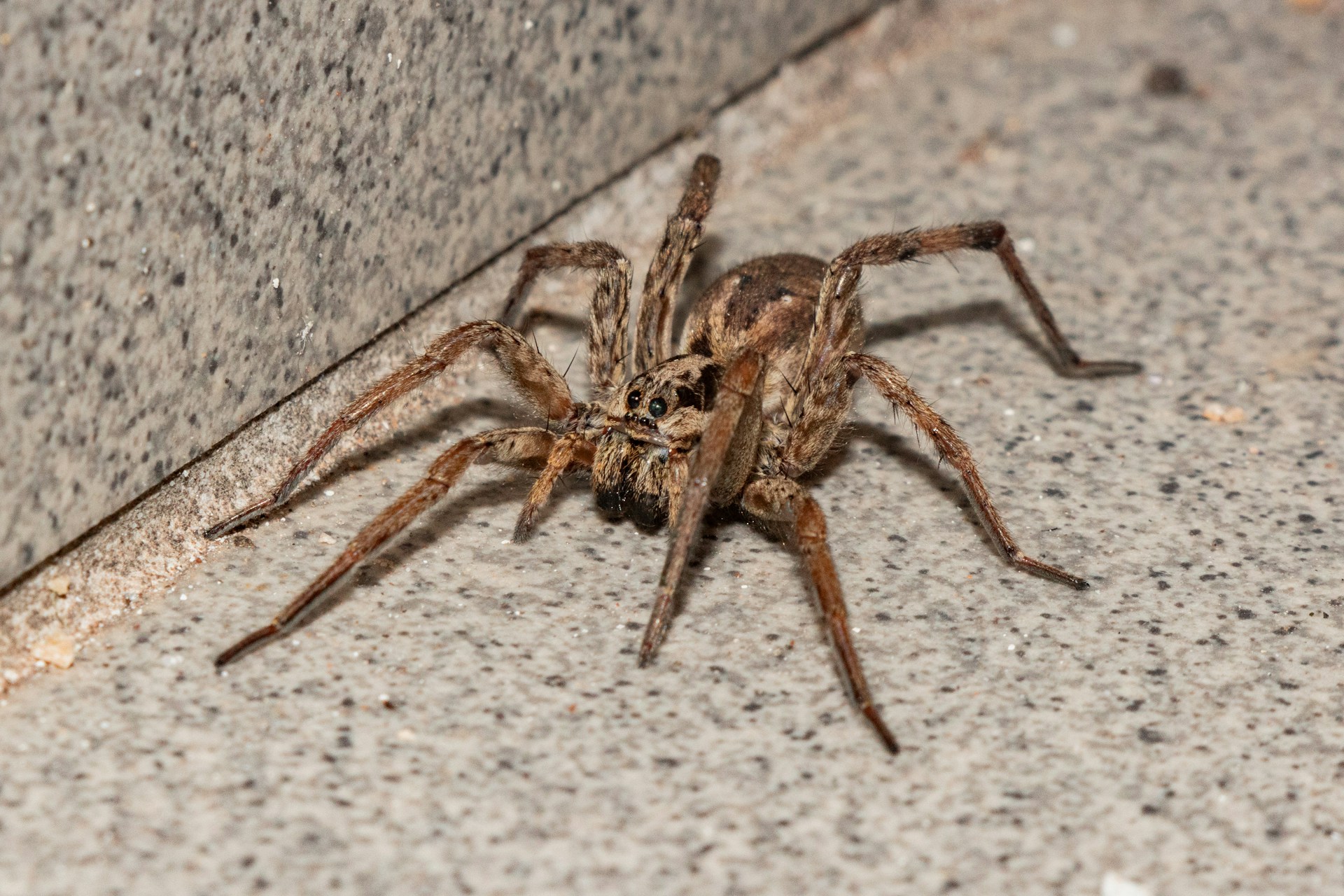
- Fishing spiders: can appear quite large and intimidated; often found near cottages and docks; harmless but startling.

- Cross orb weavers: build large spiral webs on porches, windows, and shrubs in late summer; beneficial for insect control
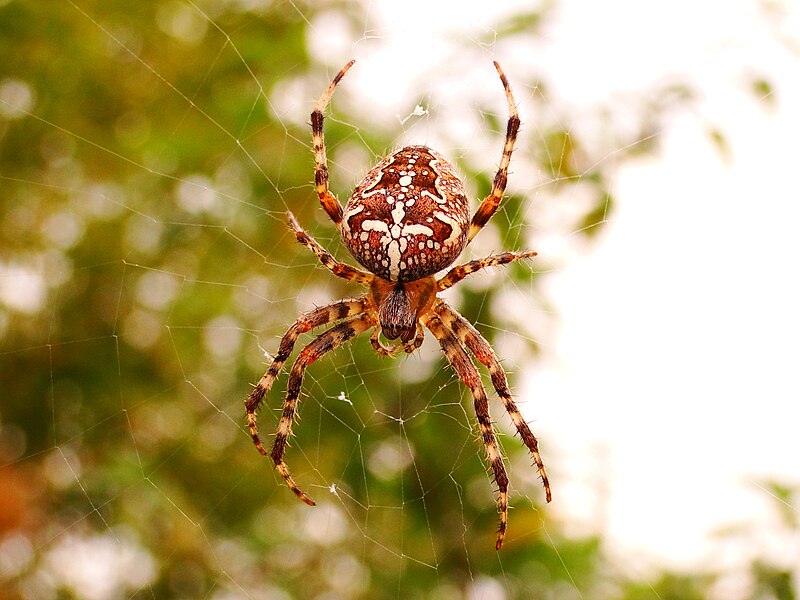
- Jumping spiders: small, curious, and harmless; often seen near windows or walls; they hunt during the day and don't build webs.

- Running crab spiders: active hunters; they hold their legs out to the side in a crab-like style when resting; not poisonous to humans.
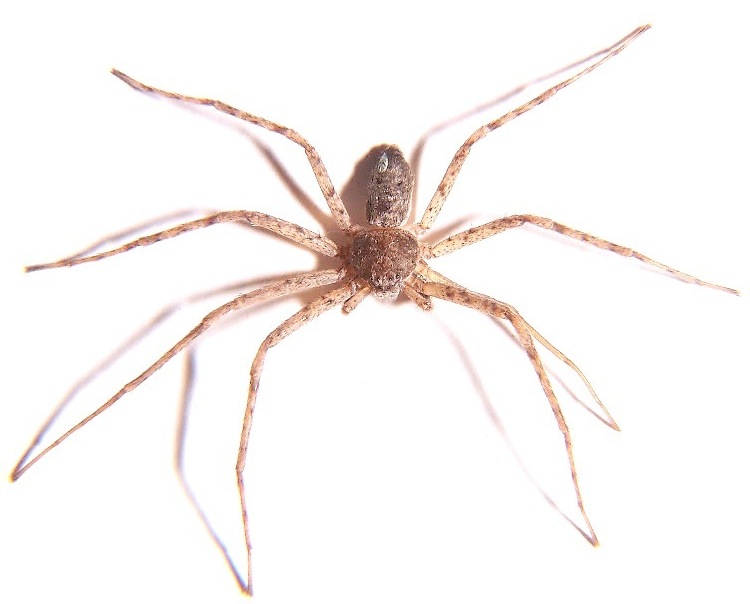
Keep Spiders Out with Innovative Windows and Bug Screens!
While venomous spiders in Ontario are uncommon, it's always best to take preventative action, especially if you live near wooded areas, store firewood, or have arachnophobia!
Magic can help you protect your home! Our high-performance windows, doors, and retractable bug screens are engineered right here in Ontario to keep your home energy-efficient and prevent insects and spiders at all times!
Contact Magic today to learn more about how we can help you create a safer, more comfortable spider-free home!
Frequently Asked Questions
Are there any venomous spiders in Ontario?
Among the venomous spiders spotted in Ontario are the black widow spider, the yellow sac spider, and the brown recluse spider. However, their population is scarce.
Do brown recluse spiders live in Ontario?
Brown recluse spiders do not live in Ontario. However, they may be introduced to Ontario and other regions in Canada by travelers or through cargo vessels shipping goods.
Are Canadian house spiders poisonous?
Most spiders found in Canadian homes are not poisonous. However, black widow spiders, brown recluse spiders, and yellow sac spiders, which are venomous, have been spotted in Canada, so they may also enter your home.
When to spray for spiders in Ontario?
It is generally recommended to spray for spiders in Ontario in the early spring. However, it's best to contact a pest control company in this regard.
How can I prevent spider infestations in my home?
To prevent spider infestations in your home, seal all entry points, install bug screens, and keep your living space clean and clutter-free.